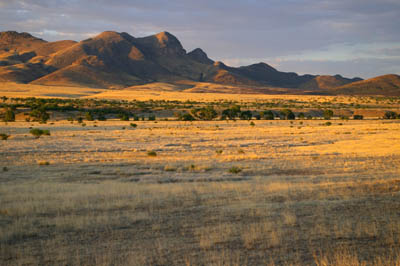
Field Institute in Environmental & Borderlands History
2009 NEH Summer Institute
for University and College Teachers
June 14-July 11
| |
| home |
| how to apply |
| venues & general information |
| preliminary detailed schedule and readings |
| housing |
| contact |
| General Schedule |
Our general summer institute schedule balances classroom seminars with field study tours. The field study tours, guided by scholars and experts, move the classroom into the outdoors and into historic locales beyond the university. Our plan is to engage us all as active partners in the learning process, through our physical immersion in the regional environments as well as through our intellectual discussions of readings, documents and ideas in the field. We intend to model ways to extend the intellectual reach of undergraduate humanities courses. The immersion experience, on the field study tours in particular, does make for a full schedule. Mindful of the travel demands, we have included optional excursions, so that you may determine your own needs. The preliminary detailed schedule, which includes all readings and recommended texts, is posted on this summer institute website but let me give you a shorter overview here. Week One Week Two The field study tour begins in southwestern New Mexico at two adjacent ranches, the Armendaris and the Ladder, ideal locations for examining the links between history and ecology in the borderlands. The historical owners of the Armendaris and Ladder ranches managed them well, permitting an illuminating measure of environmental change. Ranch managers Thomas Waddell and Steve Dobrott, wildlife biologists Joe Truett and Harley Shaw, as well as historians Diana Hadley, Marsha Weisiger, and J.C. Mutchler will be our guides as we explore the effects of 19th-century human activities, such as ranching, guano mining, settlement and scientific management. While in residence we will also pay particular attention to the questions raised by the restoration of habitats and species, including prairie dogs, peregrine falcons, Bolson tortoises, Mexican gray wolves, and bison.
|
For the remainder of the Institute’s second week, we’ll head to the Chiricahua Mountains just north of the international border and stay at the American Museum of Natural History’s Southwestern Research Station. In seminars and field study tours we will compare the diverse peoples—Apache, Anglo and Mexican settlers, soldiers, and federal agency managers—who have historically engaged each other and the environment from the 19th into the 20th century. Principal faculty Dr. Paul Hirt will coordinate the activities in this segment of the tour. We will be joined by Apache scholar Dale Curtis Miles and environmental historians Stephen Pyne and Diana Hadley. 
photo by Dan Arreola Week Three Douglas, Arizona, will be our headquarters as we focus on the urban and copper mining industrial landscapes that dominated the border region in the 20th century. Dr. Katherine Morrissey and Dr. Samuel Truett will draw upon their own research as we explore the political, environmental and cultural histories of the linked mining communities of Cananea, Sonora; Bisbee and Douglas, Arizona. We expect to be joined by a Cananea local historian in Sonora, where we will emphasize the early 20th-century turmoil of the Mexican Revolution as well as environmental impacts resulting from legal alterations in the Mexican land distribution (ejidal) system through the 20th century. Our final day of the field study tour will be the 4th of July, a day on which participants will be able to observe and partake in the diverse rites of nationalism celebrated in two culturally distinctive border towns: Bisbee and Douglas, Arizona. Week Four In the afternoons you will have time to work on your own research or curriculum projects. We have arranged for time and space, along with skilled specialists, at several UA research facilities to help facilitate your own research and technology needs: Special Collections (Veronica Reyes), Center for Creative Photography (Cass Fey), and Arizona State Museum (Diana Hadley).These final projects may take any form, and we encourage you to consider ways to integrate the summer institute materials and themes into your existing undergraduate courses. You will have access to digitization equipment in order to create computer-ready materials from Special Collections and the Arizona State Museum. Participants will present their projects during the final days of the institute and, once completed, make them available for the Summer Institute website. On Friday the project director, principal faculty and participants will join in a roundtable discussion to assess the achievements of the summer institute. |
||